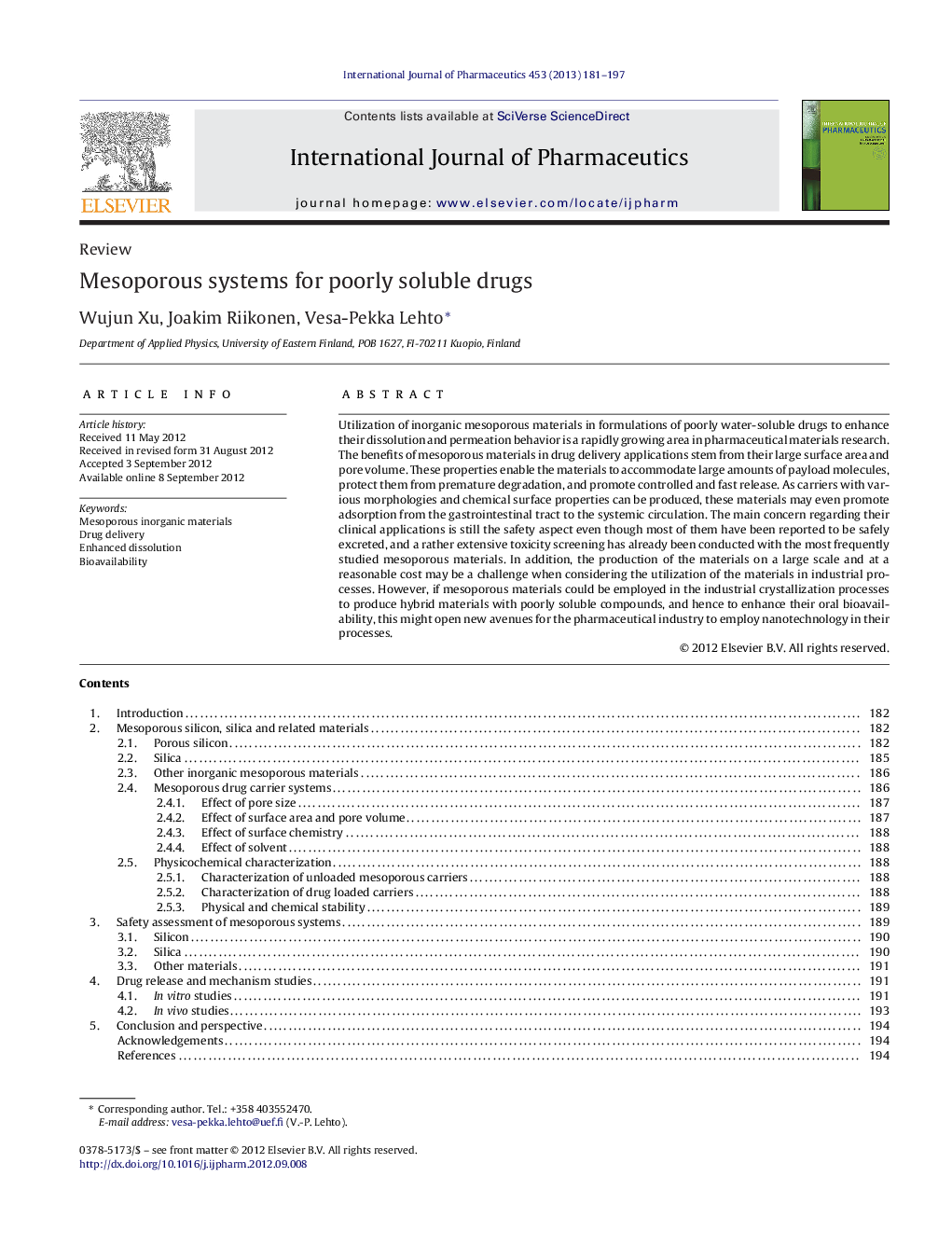| Article ID | Journal | Published Year | Pages | File Type |
|---|---|---|---|---|
| 2502410 | International Journal of Pharmaceutics | 2013 | 17 Pages |
Utilization of inorganic mesoporous materials in formulations of poorly water-soluble drugs to enhance their dissolution and permeation behavior is a rapidly growing area in pharmaceutical materials research. The benefits of mesoporous materials in drug delivery applications stem from their large surface area and pore volume. These properties enable the materials to accommodate large amounts of payload molecules, protect them from premature degradation, and promote controlled and fast release. As carriers with various morphologies and chemical surface properties can be produced, these materials may even promote adsorption from the gastrointestinal tract to the systemic circulation. The main concern regarding their clinical applications is still the safety aspect even though most of them have been reported to be safely excreted, and a rather extensive toxicity screening has already been conducted with the most frequently studied mesoporous materials. In addition, the production of the materials on a large scale and at a reasonable cost may be a challenge when considering the utilization of the materials in industrial processes. However, if mesoporous materials could be employed in the industrial crystallization processes to produce hybrid materials with poorly soluble compounds, and hence to enhance their oral bioavailability, this might open new avenues for the pharmaceutical industry to employ nanotechnology in their processes.
Graphical abstractFigure optionsDownload full-size imageDownload high-quality image (77 K)Download as PowerPoint slide
